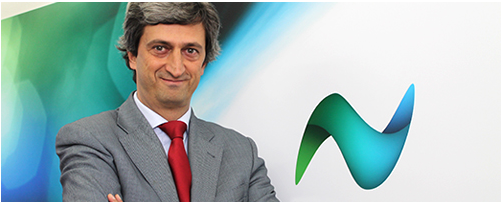
|

 |
|
 |
Subscribe here. |
||||||||
| EDITORIAL | HIGHLIGHTS | TECHNICAL INFORMATION | LITERATURE REVIEW | EVENTS | LINKS | QUIZ | ||
 |
|
|
These new tools must cope with the new reality of demand side participation in the energy system, the management of flexibility sources by system operators, the continuous focus on efficiency and reliability of the system, among others. The H2020 European Project INTERPRETER ("Interoperable tools for an efficient management and effective planning of the electricity grid"), where R&D Nester is participating, is precisely looking into some of those aspects, as you can read below. Furthermore, analytics and data management are increasingly becoming key aspects to take into consideration in the Energy System, namely for system operation and for network maintenance purposes. The new European projects BD4NRG ("Big Data for Next Generation Energy") and I-NERGY ("Artificial Intelligence for Next Generation Energy"), in which R&D Nester partakes, explore the application of big data, AI, IoT and analytics to improve decision making. We bring you additional information on this initiatives below. As the Energy Transition progresses, namely with the introduction of diverse flexibility sources, it is important to ensure that the stability, efficiency and security of supply of the system is kept. OSMOSE project ("Optimal System-Mix of Flexibility Solutions for European Electricity") is looking into those aspects, with the participation of R&D Nester, and you can read about the application to Southern Western Europe below. In a more exploratory note, on "High-Temperature Super Conductivity for Accelerating the Energy Transition", you can read below how R&D Nester is contributing to COST Action CA19108 on that topic. We also bring you some information unveiling what we are doing on the solar energy forecast front and on the standard developments related to communications for smart-grids/smart-meters, namely Broadband communications. As you see, diverse and rich material to learn from! Also, we updated our Links related section, as new entities and organizations are emerging which can be of interest to you in this exiting, evolving and increasingly interconnected field. Finally, if you are up to a challenge, you can see how you score on electricity protections trivia in our popular Quiz section at the end of this Newsletter. Enjoy your reading! Sincerely, Nuno de Souza e Silva Managing Director |
| HIGHLIGHTS |  |
|
|||||||
|
|||||||
|
|||||||
|
|||||||
|
|||||||
|
|||||||
|
|
| TECHNICAL INFORMATION |  |
|
|||||||
|
|||||||
|
|
| LITERATURE REVIEW |  |
|
|||||||
|
|||||||
|
|||||||
|
|
|
|
|
|
|
|
|
|
|
|
| QUIZ |  |
|
|
|
LINKS |
 |
|
Some useful links: |
|||
|
Portugal
Europe
Rest of World
|
OTHERS ENTITIES |
||
|
||||||||||||||||||
|
If you want to unsubscribe this newsletter, click here.